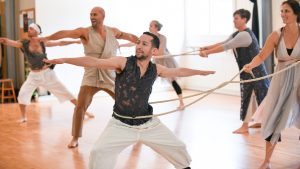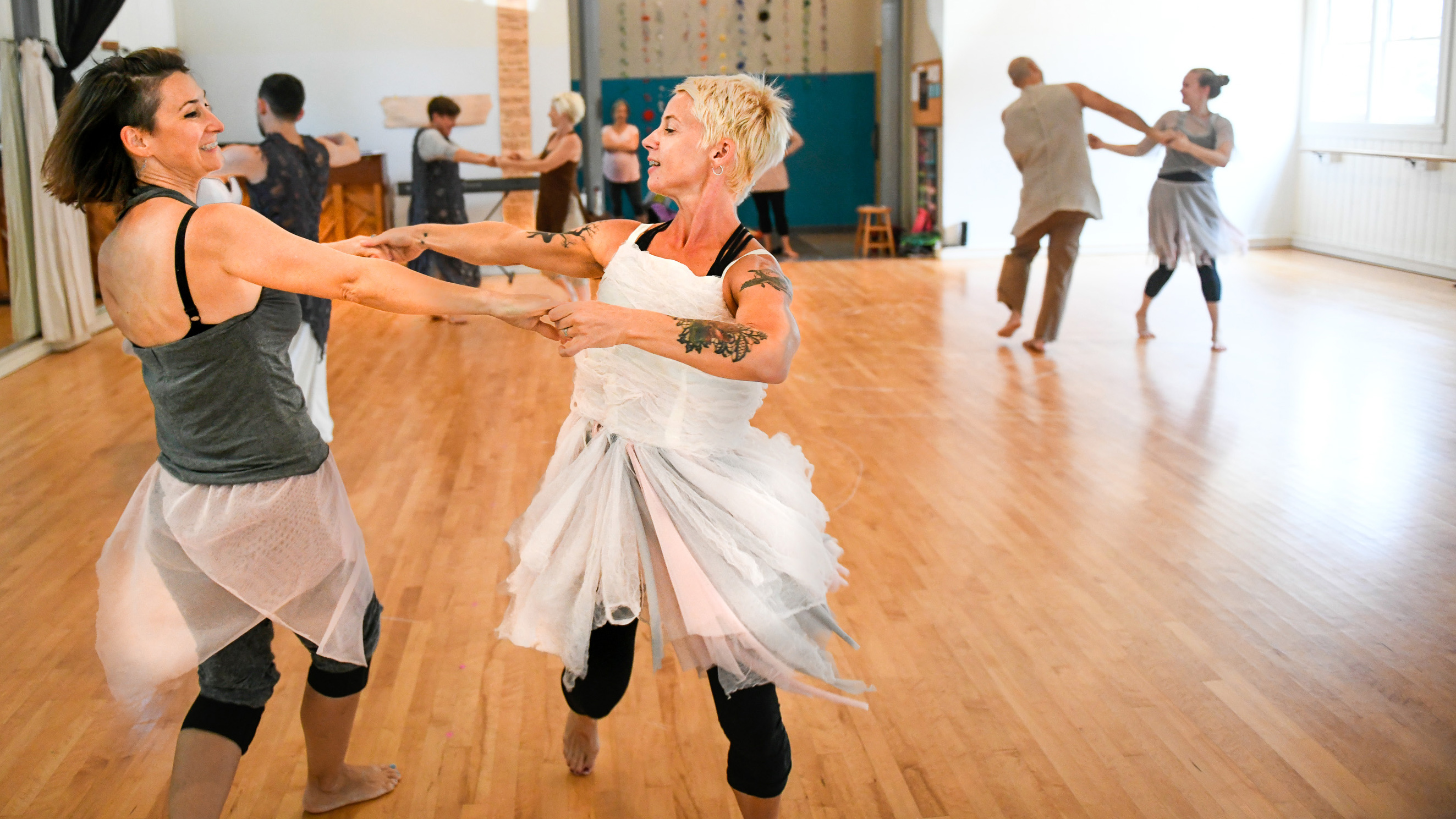Math in Motion
Here’s a quick experiment — get a group of people together and ask them to list things they aren’t very good at. It’s likely that math and dancing will end up somewhere on those lists.
Tye Lidman and Michelle Pearson are looking to change that. Lidman is an assistant professor of mathematics at NC State. He studies topology, or the structure of shape — specifically knots. Pearson is the director of Black Box Dance Theatre, a modern dance troupe that specializes in nonfiction dance and education. Together they’ve created a modern dance performance that explores complicated mathematical concepts — with NC State students and local community members taking part.
Podcast: Lidman and Pearson describe their collaboration
“Topology is a tool for studying something’s core structure,” Lidman said. “It’s a good tool for data analysis. For example, topology shows us how large chunks of data may be clustered so that researchers can find important patterns within the data. Or it’s good for studying things like the shape of DNA and how changing that structure might change its function.”

But even though topology is useful, it can be hard to explain. Lidman’s latest research is funded by the National Science Foundation, which encourages scientists to think about fresh ways to communicate what they do to the general public.
“I actually minored in dance in college, and while I was there I saw a program called Dance Your Ph.D., in which scientists would compete by creating dances to illustrate their work,” he said. “Topology is a very visual field, so I thought dance would be a good medium for explaining it.”
When it comes to conveying complicated topics through dance, Pearson and Black Box are seasoned veterans. The troupe is part of the North Carolina Arts Council Cartwheels Program, and has done programs for K-12 schools in topics ranging from astronomy to the Underground Railroad.
“When Tye approached me with the idea, he explained his work as being about the ways that shapes move in space, and I thought, ‘Well, I’m a shape,’ so it was really a natural fit,” Pearson said. “Dance is about making a human connection to a topic — in this case you’re using human bodies and the ways they create shapes to talk about the mathematical aspects of topology.”
Lidman and Pearson embarked on a two-year collaboration, trying to figure out the best way to engage audiences both inside and outside the university with topology. The result is a performance entitled Applied Dance + Inspired Math.
One of the most unique aspects of the dance is its participatory nature. The performers aren’t just from Black Box — they include NC State students and dancers, community members ranging in age from 12 to 64, high school students and Lidman himself.
After the performance, Pearson and Lidman hope to take portions of the larger work on the road — doing workshops and math/dance labs in schools around North Carolina.
“The idea here is to bring people in who may be interested in dance or math — or neither one,” Pearson said. “This is an opportunity for someone who may think, ‘Oh, I can’t do math or dance.’ Both of our areas attract this sentiment, and we want to address that. You can do these things.”
“Math isn’t just about memorizing formulas and being bored,” Lidman added. “The math people learn at an early age doesn’t give you a picture of all the aspects of math. Maybe you’re not great with formulas, but that doesn’t mean you can’t do math. Topology is about visualization and creativity, and we want to give people the opportunity to experience that themselves.”
- Categories:



